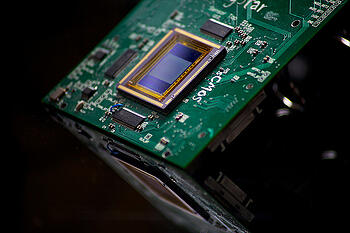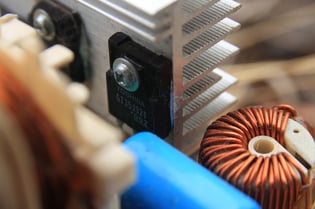 Surface Mounting Technologies have revolutionized modern manufacturing, and every year, businesses are discovering all the benefits it can bring to their products.
Surface Mounting Technologies have revolutionized modern manufacturing, and every year, businesses are discovering all the benefits it can bring to their products.
Unlike older "through hole" circuit board design, SMT allows for components to be directly mounted on the surface of the board. There's no need to have wires directly connecting the top and bottom sides. This brings a wide variety of new options to circuit design and printing, with very few disadvantages.
The Many Benefits Of Surface Mounting Technologies
1 - Fewer holes drilled
Every time a drill has to penetrate a circuit board, that decreases its physical strength while increasing the chances of a fracture happening during the drilling process. SMT requires only a handful of holes, leading to greater tensile strength in the finished product.
2 - Higher component density
SMT can handle much smaller components than through-hole techniques, and they're getting smaller every year. Components sizes can be less than a quarter of a millimeter across! This means you can pack far more systems onto a single circuit board, while requiring less space.
3 - Top-and-bottom component mounting
Since the bottom of SMT circuit boards don't have to be reserved for wiring, it opens up an entire new surface for component mounting. This further reduces the size of the final product, as well as lowering manufacturing costs as compared to making multiple boards.
4 - Faster prototyping
It's quicker and easier to set up an assembly line to produce small batches of units made with Surface Mounting Technology, than to create them using through-hole methods. With modern techniques, you can get full prototypes in just a few days. This also eliminates the reliance on bulky "breadboards" for prototyping. You can go straight to prototype designs which look substantially like the finished product.
5 - Improved vibration resistance 
Through-hole circuit boards are extremely susceptible to having components or wires coming loose in situations where the unit is shaken or vibrated often. This makes SMT a superior choice for a wide variety of both professional- and consumer-grade equipment, especially devices likely to be carried in a bag or pocket. It also makes haptic feedback systems viable in small devices.
6 - Lower RF emissions / interference
SMT components have a lower resistance than through-hole, as well as having a smaller radiation loop area. This leads to a device that's more predictable under sustained usage, as well as easier to bring into compliance with government radio-frequency broadcast standards.
7 - Mix and match techniques
Through-hole boards can't support surface mounting technologies, but SMT can still use through-hole components when necessary. This is useful because there are a few component types SMT works poorly with, especially those which generate substantial heat. It's common, for example, for an otherwise SMT board to use through-hole connections for the power supply.
Surface Mounting Brings Superior Products
In nearly all cases, there's no reason to use through-hole mounting as a primary production technique any more. There are just too many benefits to SMT. If your manufacturing partner still emphasizes the older standard, you might want to start shopping around. You may be surprised at just how much better your designs can become, when manufactured at an SMT shop.
ZenTech can make your next product a reality, even if it's only on the drawing board. Contact us today for a free consultation.





